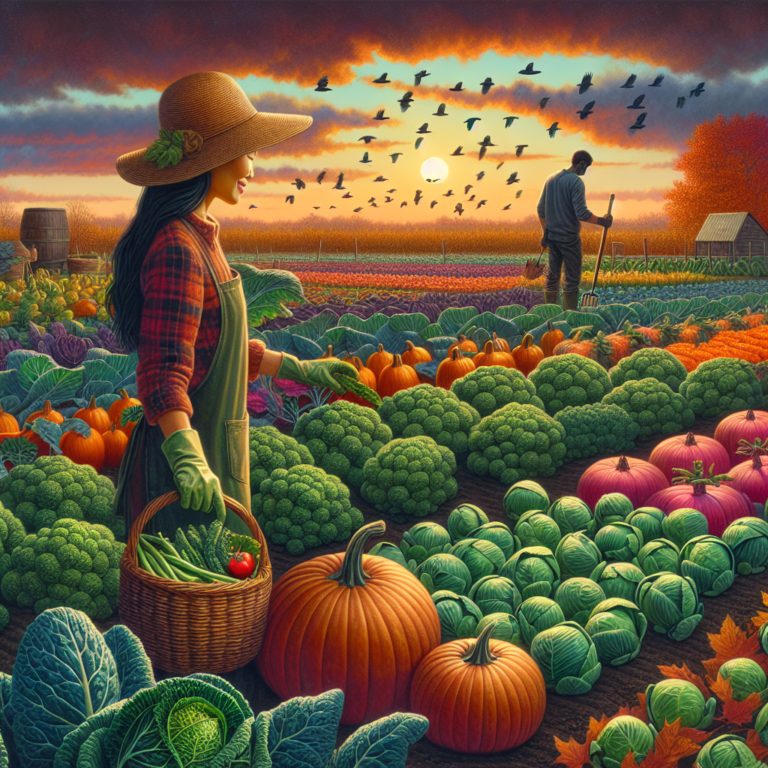Fall is an enchanting season that brings a cooler climate, vibrant leaves, and a perfect time for gardeners to plant a variety of vegetables that thrive in autumn’s embrace. If you’re keen on extending your gardening season, you’re in luck because fall is ideal for planting certain vegetables that can handle the chill and even benefit from it. In this comprehensive guide, we’ll explore the best vegetables for fall planting, so you can enjoy a bountiful harvest before winter sets in.
Why Plant Vegetables in the Fall?
The fall season offers a unique set of advantages for growing vegetables. Cooler temperatures mean less evaporation, which can lead to better moisture retention in the soil and less frequent watering. Additionally, many pests and diseases that plague summer crops are less active in the fall, leading to healthier plants and cleaner harvests. Moreover, the mild weather is not only pleasant for the plants but also for the gardeners who tend to them.
The Right Timing is Key
To ensure a successful fall vegetable garden, timing your planting is crucial. You’ll need to consider the “first frost date” in your region to plan backward and give your plants enough time to mature before the cold sets in. A general rule of thumb is to plant at least 4-6 weeks before the first expected frost.
Best Autumn Vegetables for Planting
Root Vegetables Galore
Root vegetables are champions of the cool season. Carrots, radishes, turnips, and beets can be sown directly into the soil. They are not only easy to grow but also improve in taste after a light frost, which can convert their starches into sugars and enhance their flavor.
Carrots
Carrots require a loose, sandy soil that allows for their roots to grow deep and straight. Plan on a 70 to 80-day maturity period for most varieties, so they should be planted by mid-August to early September.
Beets
Beets can be planted a little later due to their faster growth rate; aim for late August to early September. They thrive in fertile soil with a good supply of phosphorus.
Radishes
Radishes are a quick crop and can be planted later in the fall season. They mature in just 3-4 weeks, making them perfect for succession planting.
Hardy Greens
Greens like spinach, kale, and collards can tolerate colder temperatures and even improve in flavor after a frost. They are also some of the fastest-growing vegetables, which is ideal for fall planting.
Spinach
Spinach is perfect for a late-season crop. Plant spinach seeds in early September to harvest in late fall or early winter. It prefers well-drained soil rich in organic matter.
Kale
Kale is incredibly frost-tolerant, and its leaves become sweeter post-frost. Plant kale seeds in late summer to early fall for a crop that can last until snowfall.
Collards
Collards, like kale, can withstand cold temperatures. For a fall harvest, plant collards in late summer. They will be ready to pick in about 60 to 80 days.
Brassicas
The brassica family, including broccoli, cauliflower, and Brussels sprouts, are well-suited for fall planting. They require a bit more time to mature but are worth the wait.
Broccoli
Broccoli prefers cooler temperatures and can be planted in late summer for a fall harvest. Look for fast-maturing varieties that can produce a harvest before heavy frost.
Cauliflower
Cauliflower requires consistent temperatures to develop its head. Plant in late summer and choose varieties that are quick to mature.
Brussels Sprouts
Brussels sprouts are slow growers that are best planted by mid-summer for a fall harvest. They taste best after being kissed by frost.
Plant Care for Fall Vegetables
Soil Preparation
Before planting, prepare your garden beds by clearing out any remnants of summer crops and weeds. Add compost or a balanced fertilizer to replenish nutrients in the soil. Ensure the soil is well-drained and aerated to promote healthy root growth.
Watering and Mulching
Even though fall crops require less watering, consistent moisture is still essential for germination and growth. Water your vegetables in the morning to prevent evaporation. As temperatures begin to drop, mulch your garden beds with straw or leaves to protect the roots and retain soil moisture.
Pest and Disease Management
While fall does see a decrease in pest activity, it’s still important to monitor your plants. Remove any diseased or infested leaves and dispose of them properly. Use row covers to protect your plants from pests and light frosts.
Harvesting Your Fall Vegetables
Harvesting at the right time is crucial for the best flavor and texture. Root vegetables can be left in the ground until needed, as the soil acts as natural insulation. Greens can be harvested leaf by leaf or by cutting the whole plant. Brassicas should be harvested before they become over-mature, which can result in bitterness.
Conclusion
Fall is a fantastic time for gardeners to continue their passion and reap the benefits of a second harvest. By choosing the right vegetables and providing proper care, you can extend the productivity of your garden well into the cooler months. With the crisp air and fewer pests, fall gardening can be a delightful and rewarding experience. So, grab your vegetable seeds and get planting – your autumn garden awaits!








